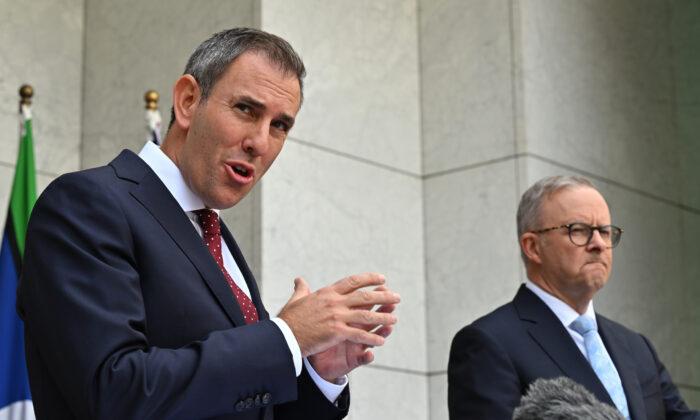In a quiet week for economic data, federal Treasurer Dr. Jim Chalmers will release the latest Intergenerational Report (IGR).
The report will lay out the big changes under way in the economy and Australian society over the next four decades.
The five main spending pressures—health, aged care, NDIS, defence and interest payments on debt—are projected to grow from one-third of total Commonwealth government spending in 2022-23 to one-half of total spending by 2062-63.
The cost of servicing government debt will continue to be a persistent challenge in a decade’s time, the report says.
Health spending is expected to increase the most as a share of GDP over the next 40 years.
Mr. Chalmers will use a speech to the National Press Club in Canberra on Aug. 24 to explain what the government is doing to position Australians to benefit from the changes, rather than be victims.
He lists some of the challenges as securing global supply chains, broadening and deepening the industrial base, investing in cleaner energy, better use of technology, and building the skills base to make the economy more productive.
The treasurer will be at pains to explain the government can deal with current cost-of-living pressures and balance the budget books while also looking at future trends and shifts in the economy.
“We’re getting the budget in much better nick, but what the Intergenerational Report reveals is after this year, the pressure on the budget intensifies,” Mr. Chalmers said in comments released ahead of the report’s release.
“Whether it’s essential spending on health, aged care, defence and the NDIS or the interest costs on the eye watering debt left behind by the Liberals, the budget is under pressure in the long term.”
Coalition frontbencher Simon Birmingham said the opposition was waiting for the government to produce the policies to address the issues raised.
“If the government wants to bring forward sensible measures to ensure the sustainability of the NDIS or the sustainability of aged care spending, we are up for working with the government because we want to be constructive in these areas,” he told Sky News on Sunday.
A book released earlier this year, “More than Fiscal,” produced by the Academy of the Social Sciences in Australia, outlines some of the pitfalls and benefits of the five IGRs produced since 2002.
The book points out not everything in the reports has been accurate.
The first IGR forecast Australia’s population to hit 25.7 million in 2050—a figure actually reached in 2021.
On the domestic data front, the latest consumer sentiment figures from ANZ-Roy Morgan will be released on Aug. 22.
The S&P 500 ended nearly flat on Aug. 18 as gains in defensive sectors and energy offset weakness in megacap growth stocks, while investors looked toward next week’s speech by Federal Reserve Chair Jerome Powell.
For the week, the ASX200 finished down 2.6 per cent, its worst since a 3.9 per cent loss 50 weeks ago.







